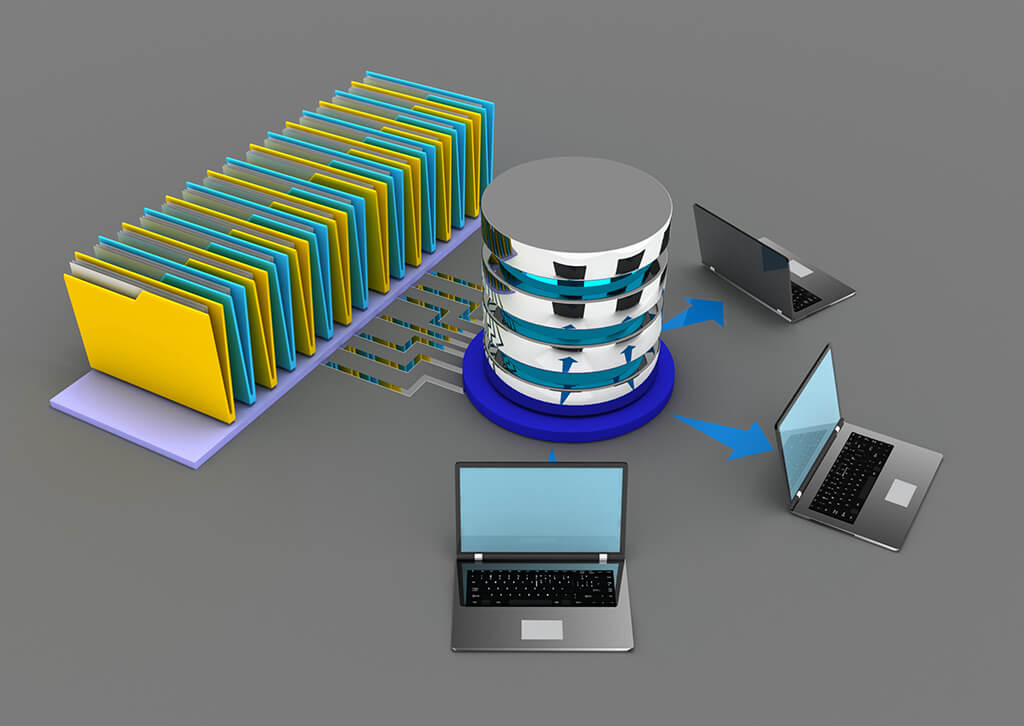There are three types of traditional object storage server
File Storage
File storage exists in two forms: File Servers and Networked Attached Storage (NAS). NAS
is a file server appliance. File storage provides standard network file sharing protocols to
exchange file content between systems. Standard file sharing protocols include NFS and
SMB (CIFS). Index tables include: inode tables, records of where the data resides on the
physical storage devices or appliances, and file paths, which provide the addresses of
those files. Standard file system metadata, stored separately from the file itself, record
basic file attributes such as the file name, the length of the contents of a file, and the file
creation date.
Block Storage
Which manages data as blocks within sectors and tracks, and file storage, which manages
files organized into hierarchical file systems. In computing, a block, sometimes called a
physical record, is a sequence of bytes or bits, usually containing some whole number of
records, having a maximum length, a block size. Data thus structured are said to be
blocked. Block storage is used by Storage Area Networks (SANs), where a SAN disk array
is connected via a SCSI, iSCSI (SCSI over Ethernet) or Fibre Channel network to servers
Object Storage
Designed to be massively scalable and as such is fundamentally different from traditional
block or file storage systems. Object storage organizes information into containers of
flexible sizes, referred to as objects. Each object includes the data itself as well as its
associated metadata and has a globally unique identifier, instead of a file name and a file
path. These unique identifiers are arranged in a flat address space, which remove s the
complexity and scalability challenges of a hierarchical file system based on complex file
paths.
Meta Data
Object storage systems can be augmented with custom attributes to handle additional file –
related information. Doing so with a traditional storage system would require a custom
application and database to manage the metadata (these are known as “extended
attributes”).
GETTING OBJECT STORAGE READY FOR THE ENTERPRISE
Natively, object storage systems speak RESTful / HTTP protocols, the same ‘langua ge’ as
the Internet. Because of this native support for Web protocols, an object storage system is
perfectly suited to Web 2.0, Cloud-native and XaaS use cases. Historically, this Webcentricity was considered an impediment to adoption by mainstream enterp rise
applications, which use traditional NFS, SMB, or SCSI interfaces. However, this has
changed with the rise of cloud computing, mobile applications, and cloud -native
applications which all use HTTP to provide and access services.
To provide universal information access within an object storage system, some object
storage vendors have added support for enterprise file sharing protocols such as NFS and
SMB, either natively, like Scality, or by using a cloud gateway. In addition, some object
storage systems support two other important HTTP-based protocols: Amazon Web Services
Simple Storage Service APIs known as S3, which is a de -facto standard; and CDMI, the
Cloud Data Management Interface, an industry standard API, specified and promoted by
the Storage Networking Industry Association (SNIA) for accessing cloud storage.
RAID
RAID has been a classic solution for smaller storage arrays and terabytes of data.
However, as systems have grown to hundreds and thousands of disks, and drives have
gotten much denser, RAID has become problematic because it can’t protect data across
these larger fault domains, and rebuilds of single 8 terabyte drives can take days and
impact overall system performance. Rather than using RAID to protect data, object
storage provides for redundancy and high availability in two ways
Replication
Replication is a data protection technique that stores multiple copies of each object on
different nodes and, potentially, across multiple, geographically dispersed data centers. It
is particularly appropriate for the protection of large numbers of small files.
Erasure Coding
Large files, on the other hand, are best protected using a technology called Erasure
Coding. Erasure Coding divides an
object into pieces, and calculates multiple parities. In the event that the original file, or
some of the pieces of it are lost, the system can use the parities and the remaining pieces
to recalculate the original data. Some object storage implementations store only parities,
requiring a processor-intensive recalculation and decoding of data to access.
WHAT IS A NODE IN STORAGE
Most object storage solutions are architected to run on inexpensive commodity x86
hardware. Each server constitutes a node, which provides both compute and storage
resources. This allows for the linear scaling of both capacity and performance by simply
adding additional nodes. Although object storage service is often sold as a storage
appliance (hardware with installed software), pure object storage is ‘software -only’ and is
typically hardware-agnostic.
EVALUATING OBJECT STORAGE
Object Storage solutions are often designed as a distributed architecture, a collection of
distributed servers operating in parallel requiring no special machine or machines to
provide or manage specific services. Instead all responsibilities are divided among the
machines and don’t require a central ‘control’ machine. Thus, there is no risk of a single
point of failure (SPOF) in the architecture.
When evaluating object storage, you should ask how metadata is accessed and how it
scales. While they may be designed to avoid SPOF, many are still designed with a specific
set of metadata nodes, or are based on non-scalable relational databases. These types of
designs will suffer from performance and availability degradation at scale (e.g. tens of
millions of objects, really a starting point for object stores).
Object Storage in the Cloud
An object storage system is the infrastructure used by many if not most cloud storage
services. In fact, these services might be termed cloud object storage. As explained
earlier, with software-defined object storage, server resources are aggregated into a
single massively scalable pool—an object storage service—distributing capacity to
applications and users on demand.
You don’t need to use the public cloud as, effectively, an object storage server. You can
build the equivalent in your own data center, with an object storage sys tem like the
Scality RING.



